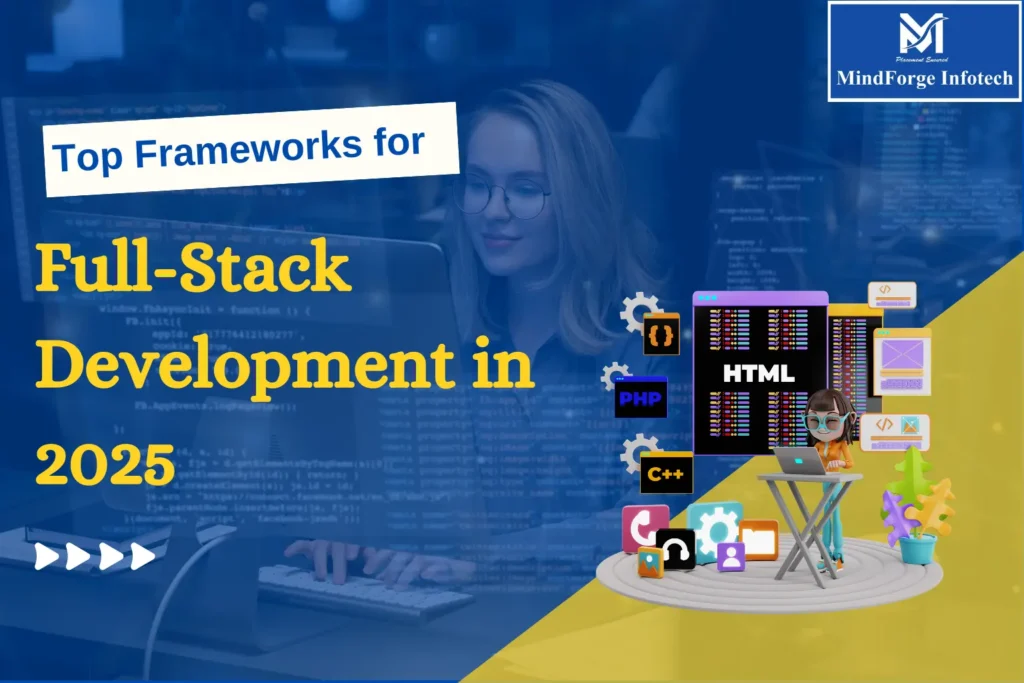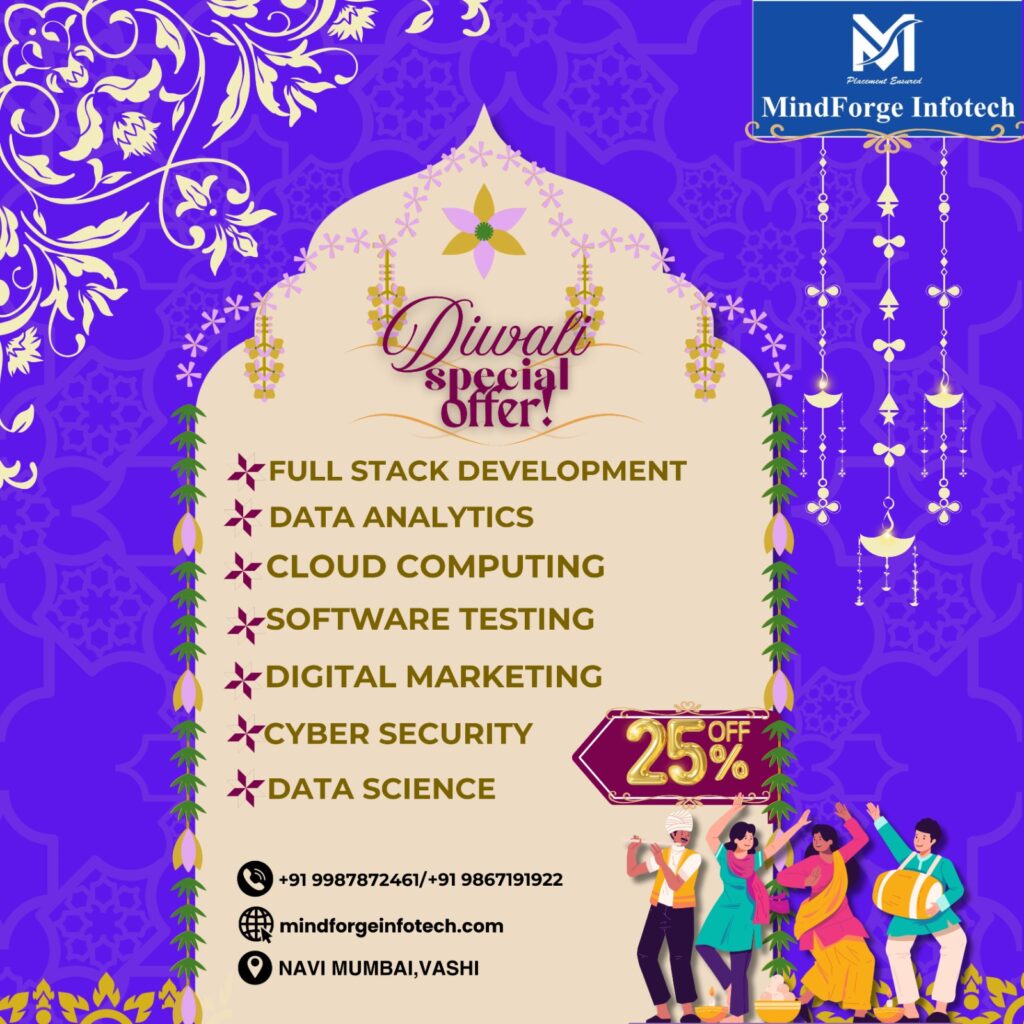
In the rapidly evolving world of software development, staying ahead of the curve requires adopting the right tools and frameworks. Full-stack development, which involves both frontend and backend technologies, has seen a surge in demand as businesses aim to build seamless, dynamic, and robust applications. By 2025, certain frameworks are set to dominate the industry due to their flexibility, scalability, and performance. In this blog, we explore the top frameworks for full-stack development in 2025 and why they are a must-know for developers.
1. React.js and Node.js (MERN Stack)
The MERN stack (MongoDB, Express.js, React.js, and Node.js) continues to be one of the most popular choices for full-stack development. Its JavaScript-centric approach simplifies development by allowing developers to use a single programming language across the entire stack.
React.js: Known for its component-based architecture and virtual DOM, React.js is ideal for creating dynamic and interactive user interfaces. With React 18’s improvements in concurrency and server-side rendering, the framework is more powerful than ever.
Node.js: As a runtime environment, Node.js excels in handling concurrent requests and building scalable backend services. Its non-blocking architecture makes it a go-to choice for real-time applications like chat apps and streaming platforms.
Why MERN?: Seamless integration between components and a vast ecosystem of libraries make the MERN stack highly efficient for developers.
2. Angular and Spring Boot
Combining Angular with Spring Boot creates a robust full-stack framework suitable for enterprise-level applications.
Angular: Developed by Google, Angular offers a comprehensive solution for frontend development with features like two-way data binding, dependency injection, and TypeScript support. Its strong typing and modularity make it ideal for large-scale projects.
Spring Boot: On the backend, Spring Boot simplifies Java-based development by providing pre-configured templates and reducing boilerplate code. Its focus on microservices architecture aligns well with modern development trends.
Why Angular + Spring Boot?: The combination ensures high performance, security, and maintainability, making it a favorite for enterprise-grade applications.
3. Vue.js and Laravel
Vue.js and Laravel together form a powerful duo for developers seeking simplicity and elegance in their projects.
Vue.js: With its gentle learning curve and flexibility, Vue.js is ideal for both beginners and experienced developers. Its progressive framework allows integration into existing projects or creating applications from scratch.
Laravel: A PHP framework, Laravel simplifies backend development with its MVC architecture, Eloquent ORM, and robust security features. The framework’s seamless integration with Vue.js enhances its appeal.
Why Vue.js + Laravel?: Together, they provide a clean and efficient environment for developing feature-rich applications with a smooth user experience.
4. Next.js and NestJS
For developers looking to build server-side rendered (SSR) applications with modern features, Next.js and NestJS are a match made in heaven.
Next.js: Built on top of React, Next.js excels in SSR and static site generation (SSG), making it perfect for performance-oriented web applications. With features like API routes and incremental static regeneration, it’s a game-changer for developers.
NestJS: A progressive Node.js framework, NestJS brings structure to backend development with its modular architecture. Inspired by Angular, it offers decorators and dependency injection, making it easy to scale applications.
Why Next.js + NestJS?: This combination ensures fast load times, SEO-friendly applications, and scalable backend solutions, perfect for modern web development needs.
5. Ruby on Rails
Ruby on Rails (RoR) remains a top choice for full-stack development in 2025, especially for startups and small businesses.
What Makes RoR Special?: Its “convention over configuration” philosophy reduces the complexity of setting up a project. With built-in features like database migrations, scaffolding, and testing tools, RoR accelerates development cycles.
Use Cases: Ideal for building MVPs, e-commerce platforms, and content management systems.
Why Ruby on Rails?: RoR’s focus on developer productivity and ease of use ensures it remains relevant in the full-stack ecosystem.
6. Django and React.js
Django, paired with React.js, offers a powerful combination for developers aiming to build scalable and secure web applications.
Django: A Python-based backend framework, Django is renowned for its “batteries-included” philosophy, offering built-in features like authentication, ORM, and admin panels.
React.js: On the frontend, React.js brings dynamic interactivity and flexibility, making it a natural companion to Django’s robust backend.
Why Django + React.js?: The duo’s complementary strengths make it ideal for full-stack applications that require both scalability and a great user experience.
7. ASP.NET Core and Blazor
Microsoft’s ASP.NET Core and Blazor provide a comprehensive framework for building full-stack applications with .NET.
ASP.NET Core: A high-performance backend framework, ASP.NET Core supports building APIs and web apps efficiently.
Blazor: Leveraging WebAssembly, Blazor allows developers to write frontend code in C#, eliminating the need to switch languages between the frontend and backend.
Why ASP.NET Core + Blazor?: This combination is perfect for .NET developers who want to leverage their skills across the entire stack.
8. SvelteKit
SvelteKit, an emerging player, is gaining traction for its simplicity and performance.
What is SvelteKit?: Built on the Svelte framework, SvelteKit focuses on building reactive user interfaces and offers seamless SSR and SSG capabilities.
Why SvelteKit?: Its lightweight nature and developer-friendly syntax make it an attractive option for modern web applications.
9. Meteor.js
Meteor.js is a full-stack JavaScript framework that streamlines the development of real-time applications.
What Makes Meteor Unique?: It provides an all-in-one solution for building both frontend and backend components, ensuring a cohesive development experience.
Why Meteor.js?: Its ease of use and robust ecosystem make it a strong contender for full-stack projects in 2025.
10. Flask and React.js
For developers seeking a lightweight yet powerful stack, Flask and React.js are an excellent choice.
Flask: A minimalist Python framework, Flask offers flexibility and control over the backend, allowing developers to customize features as needed.
React.js: With its component-based architecture, React.js ensures a seamless and interactive user experience.
Why Flask + React.js?: This combination is perfect for small to medium-scale applications that prioritize flexibility and performance.
Conclusion
Choosing the right framework is crucial for success in full-stack development. The frameworks highlighted above represent the best options for developers in 2025, catering to various needs—from rapid prototyping to enterprise-grade solutions. By mastering these frameworks, developers can stay competitive and deliver exceptional applications in an ever-evolving tech landscape.
You may explore quality training on Full Stack Java and Full Stack Python with us.
Know More: https://mindforgeinfotech.com/
